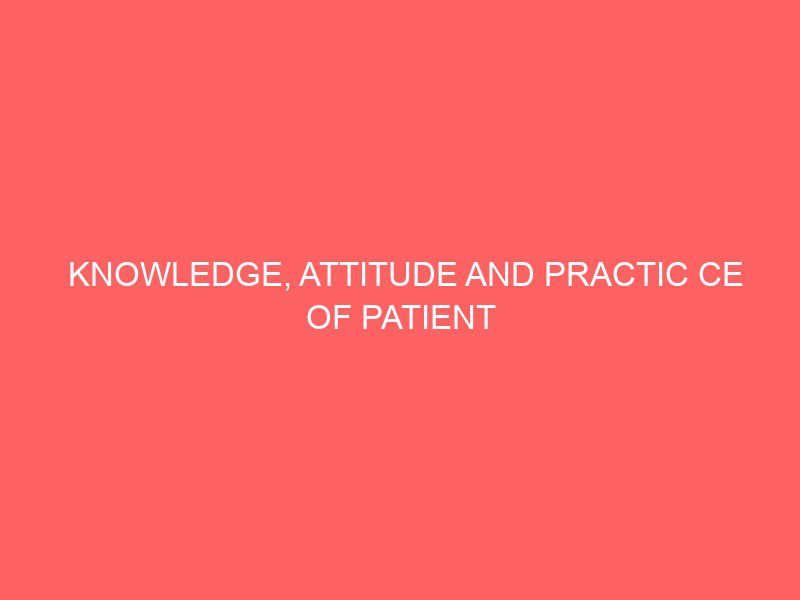Description
CHAPTER ONE INTRODUCTION Background to the Study The well known parable ?if you give a man a fish, you feed him for a day, but if you teach him to fish you feed him for a life time?, is apt for the illustration of the importance of patient teaching or education. Patient teaching or education involves helping patients become better informed about their condition, medical procedure and choices they have regarding treatment (Martin, 2012). Patient teaching is as old as nursing profession. This can be seen from the achievements of Florence Nightingale, founder of modern nursing in improving the standards for the care of war casualties in the Crimean war. Also in the Nightingale?s vision of nursing which included public health promotion roles of nurses which was only partially addressed in the early days of nursing (Berman, Snyder, Kozier, & Erb, 2012). Though other health professionals like physicians, pharmacists, registered dietician etc participate in patient teaching, nurses as educators play a key role in improving health of the patients. This is because nurses are closer to the patients than any other health professionals. (Daniels, 2004 & Kelliher 2011) Nurses assess the patient?s level of understanding about treatment methods and correct any knowledge deficits. The nurse is often a physician interpreter to the patient/client explaining in easily understood terms, clarifying and referring. Patient teaching supports behaviour change that leads to positive adaptation. Thus patient teaching involves decreasing the fear of change, reducing anxiety and anticipatory stress. Patient teaching is an essential function of every professional nurse in every practice setting -Schools, communities, worksites, healthcare delivery sites and homes. Never has the demand for quality patient teaching (education) been greater than now. The current trend toward shorter hospital stay and decreased time for healthcare professional patient interactions have increased the need for effective patient teaching. Also more of the chronically ill patients are at home in need of nursing assistance from their families, friends and volunteers. Such patients and their families and friends should possess a moderate degree of understanding of the illness and its management. Nurses who are skilled educators increased client health and well being and reduce the demand for professional services (Taylor, Lillis, Lemore, 2007). Nurses assume the role of teacher when clients have identifiable learning needs. The teacher learner relationship is enhanced by the continuance of the helping relationship in which







